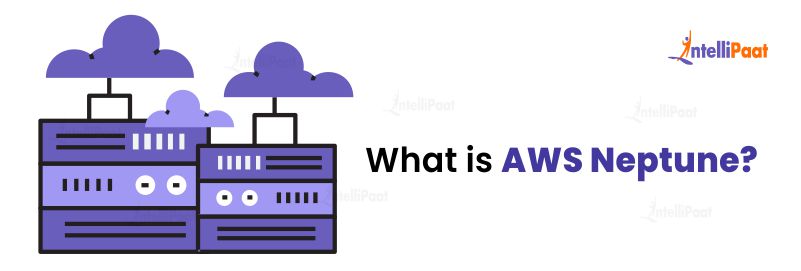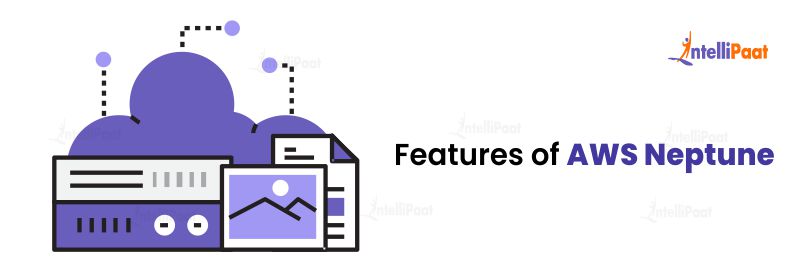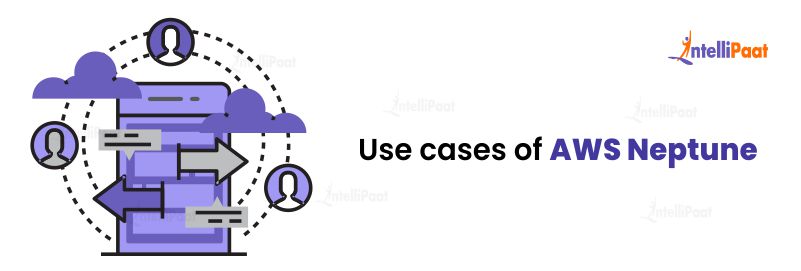AWS Neptune – The Ultimate Guide to Database
From unrivaled scalability to lightning-fast performance, AWS Neptune empowers developers to navigate complex relationships, uncover hidden patterns, and revolutionize their data management strategies. Get ready to unlock the true potential of connected data and embark on a transformative adventure with AWS Neptune as your trusted guide!
- What is AWS Neptune?
- Features of AWS Neptune
- Use Cases of AWS Neptune
- Benefits of AWS Neptune
- Aws Neptune Pricing
- Conclusion
Check out this insightful video on AWS Course for Beginners
{
“@context”: “https://schema.org”,
“@type”: “VideoObject”,
“name”: “AWS Full Course 2023 | AWS Course For Beginners | AWS Training | Intellipaat”,
“description”: “AWS Neptune – The Ultimate Guide to Database”,
“thumbnailUrl”: “https://img.youtube.com/vi/pIpSbMIxNOI/hqdefault.jpg”,
“uploadDate”: “2023-06-26T08:00:00+08:00”,
“publisher”: {
“@type”: “Organization”,
“name”: “Intellipaat Software Solutions Pvt Ltd”,
“logo”: {
“@type”: “ImageObject”,
“url”: “https://intellipaat.com/blog/wp-content/themes/intellipaat-blog-new/images/logo.png”,
“width”: 124,
“height”: 43
}
},
“embedUrl”: “https://www.youtube.com/embed/pIpSbMIxNOI”
}
What is AWS Neptune?

AWS Neptune, provided by Amazon Web Services is designed to store, manage, and query highly connected data sets using the graph database model. Neptune offers features like high performance, scalability, security, and integration with other AWS services. It is suitable for applications requiring complex relationships and deep insights. With Neptune, developers can focus on building applications without the operational burden, as AWS handles the infrastructure management.
Do you need the best AWS training in your area? Attend the AWS Certification Course at Intellipaat immediately!
Features of AWS Neptune

AWS Neptune offers a range of features that make it a powerful and efficient graph database service:
- Fully Managed- Neptune is a fully managed service provided by AWS. It handles infrastructure provisioning, setup, configuration, and maintenance tasks, allowing developers to focus on application development without worrying about operational overhead.
- Graph Database Model- Neptune is developed to work with the graph database model, which represents data as nodes and edges. This allows for efficient modeling and querying of complex relationships and interconnected data.
- High Performance- Neptune is specifically designed to excel in high-performance graph queries. It utilizes an optimized storage engine and query processing system that can efficiently handle vast graph datasets. By supporting parallel query execution and automatic indexing, it ensures speedy query results.
- Scalability- Neptune offers horizontal scalability, allowing users to scale their graph database resources based on application needs. By adding or removing database instances, users can easily handle growing workloads and accommodate changing demands.
- High Availability and Durability- Neptune ensures high availability and data durability by replicating data across multiple availability zones. It automatically handles failover in case of infrastructure failures, providing a reliable and resilient database service.
- Security and Compliance- Neptune integrates with AWS Identity and Access Management (IAM) for fine-grained access control, securing graph data. It encrypts data at rest using AWS Key Management Service (KMS) and supports SSL/TLS encryption for data in transit. Neptune is compliant with various industry standards, such as GDPR, HIPAA, and PCI DSS.
- Integration with AWS Services- Neptune seamlessly integrates with other AWS services, enabling developers to leverage additional functionalities. It can work with services like Amazon S3 for data storage, AWS Lambda for serverless computing, and AWS CloudTrail for auditing and compliance.
Interested in learning more? Go through this AWS Tutorial to gain a better understanding of AWS.
Use Cases of AWS Neptune

AWS Neptune has several use cases across various industries and domains. Some notable use cases of AWS Neptune are:
- Social Networking
Neptune is well-suited for social networking applications that involve modeling relationships between users, friends, followers, and their activities. It enables efficient querying and analysis of social graphs, helping developers build personalized experiences, social recommendations, and targeted advertising.
- Recommendation Engines
Graph databases excel at building recommendation engines by leveraging relationships between users, products, and preferences. With Neptune, developers can efficiently traverse the graph to generate accurate and personalized recommendations at scale. This enhances user engagement and drives revenue.
- Fraud Detection
Neptune can be used in fraud detection and prevention applications. By modeling and analyzing connections between various entities such as users, transactions, and behaviors, Neptune can identify patterns and anomalies that indicate potential fraudulent activities. It helps organizations detect and mitigate fraudulent behavior in real-time.
- IoT and Network Analysis
Neptune can analyze complex networks, such as IoT device networks or communication networks, to identify patterns and dependencies and optimize network performance. It enables efficient querying and traversal of network topologies, helping organizations gain insights into network behavior, troubleshoot issues, and optimize network infrastructure.
- Identity and Access Management
Neptune can be utilized in identity and access management systems to manage user identities, permissions, and relationships between users, groups, and resources. It enables efficient authorization and access control workflows, ensuring secure and granular access to resources based on complex relationships and policies.
Go through this blog on AWS Interview Questions to crack the next job interview!
Benefits of AWS Neptune
AWS Neptune offers several benefits that make it a compelling choice for building graph-based applications:
- Cost-Effective- Neptune offers a cost-effective pricing model. It allows users to scale resources up or down based on application needs, paying only for actual usage. With no upfront costs and the elimination of infrastructure management overheads, users can optimize costs and achieve a better return on investment.
- Managed Backup and Restore– Neptune provides automated backup and restore functionality. It takes regular backups of the database, storing them securely in Amazon S3. Users can easily restore data to a specific point in time, ensuring data protection and minimizing the risk of data loss.
- Simplified Development- Neptune is a fully managed service, which means AWS takes care of infrastructure provisioning, setup, configuration, and maintenance tasks. This frees developers from the operational burden, allowing them to focus on building applications and accelerating development timelines.
- Support and Documentation- AWS provides comprehensive documentation, guides, and resources to assist developers in using Neptune effectively. In addition, AWS offers reliable support services, including access to the AWS Support Center, forums, and an extensive knowledge base, ensuring prompt assistance and resolution of any issues.
- Global Reach and Availability- AWS Neptune is available in multiple AWS regions worldwide, allowing users to deploy their applications closer to end users and reduce latency. This global reach enables developers to serve a global user base, ensuring a consistent and responsive experience across different geographical locations.
Career Transition
Aws Neptune Pricing
AWS Neptune pricing is based on several factors, including instance type, storage capacity, data transfer, and any additional features or services utilized.
Here’s an overview of the key elements that impact AWS Neptune pricing:
- Instance Types- AWS Neptune offers different instance types optimized for various workloads. The pricing varies based on factors such as CPU, memory, and network performance of the chosen instance type.
- Storage- The storage capacity required for your Neptune graph database influences the pricing. AWS Neptune uses Amazon Elastic Block Store (EBS) volumes for storage, and the cost depends on the amount of data stored.
This includes both the primary storage and any automated backups created for data protection. The pricing is based on a per-GB-per-month basis. - Data Transfer- Data transfer costs are applicable when moving data in and out of your Neptune database. This includes data transfer within AWS regions, as well as data transfer between regions or outside of AWS.
- Additional Features- AWS Neptune offers additional features such as Enhanced Monitoring and Performance Insights, which provide advanced monitoring and performance optimization capabilities. These features may have their own pricing structure.
It’s significant to note that pricing for AWS services can change over time. Therefore, it is suggested to refer to the official AWS website for the latest update and accurate pricing information.
Conclusion
AWS Neptune empowers you to unlock the potential of graph data and build applications that leverage complex relationships effectively. Whether you are building recommendation engines, conducting network analysis, or exploring genomic data, Amazon Neptune provides a reliable and scalable solution.
Remember, AWS Neptune is just a tool, and the real power lies in how you leverage its capabilities to solve real-world problems. So, go ahead, dive into the domain of graph databases with AWS Neptune, and unlock the true potential of your interconnected data.
Visit our AWS Community for additional information if you’re still unsure about AWS.
The post AWS Neptune – The Ultimate Guide to Database appeared first on Intellipaat Blog.
Blog: Intellipaat - Blog
Leave a Comment
You must be logged in to post a comment.













